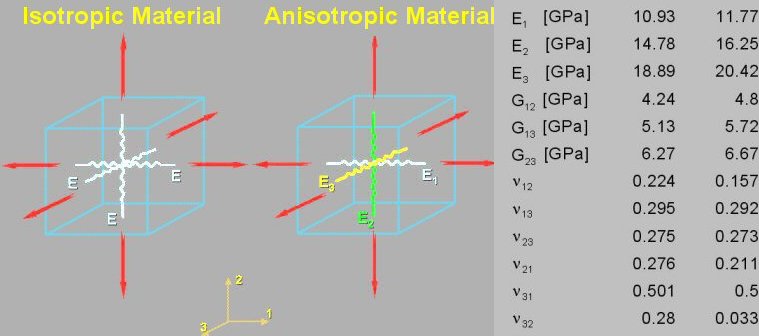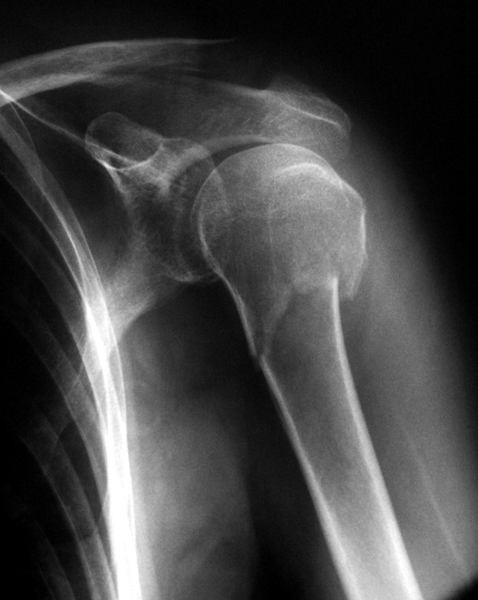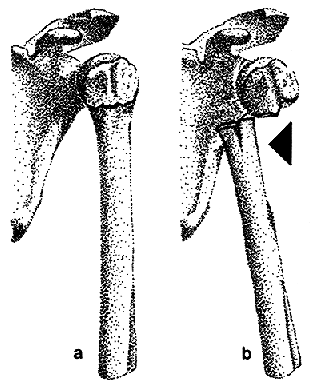The bone is not an uniform material like others usually known on finite element analysis like metals and plastics, this one its compose by layers of distincs materials and diferent propierties.

Before anything it is recommended to read first a little about this kind of materials in order to undertand they mechanical conduct. The diference between this material and others is in his espacial – mechanical propierthis, for example, in a regular isotropic material the mechanical propierties are define by YOUNG’s module and POISSON’s ratio wich completly define how the material respond to a charge in any direction in base of a simple spring acuation, in contrast, an anisotropic material does not have a single pair of constant, in fact, it shoul be define by a set of constant in every direction a charge may be aply this because the material may not respond in the same way to a cherge in diferent axis.

The use of this kind of material in CalculiX is triger by the *ELASTIC,TYPE=ENGINEERING CONSTANTS card in the .INP file
The analysis start by getting a 3D model of the humerus bone wich will be use to recreate a common fracture of the bone bay an exesive forse between the joins like in the next figure:


The objetive is to simulate a fracture on the top of the humerus by aplying a force in the middle of the bone, the anisotropic material of the bone works very well under common forces wich are alightned to the main bone axis where the material propierties offers major resistance, but it fails when reciving a external force perpendicular to this axis.
The.INP used to make this analysys contain the next code:
*INCLUDE, INPUT=fix.nam
*INCLUDE, INPUT=load.nam
*BOUNDARY
Nfix,1,3,0
*MATERIAL,NAME=EL
*ELASTIC,TYPE=ENGINEERING CONSTANTS
17000000.,11500000.,11500000.,.3,.11,.21,3600000.,3300000.,
3300000.,273.
*SOLID SECTION,ELSET=EALL,MATERIAL=EL
*STEP
*STATIC,DIRECT
*CLOAD
Nload,3,-100.
*EL FILE
S, U
*END STEP
Resulting in to the exatly same point of failure on the bone like the real one:

 Libre Mechanics it’s an Open Knowledge project created to offer a useful platform of information related with the development and research of Mechanical Engineering themes and similar fields, higly related with the use of Open Source and Software Libre tools. Here you will find a wide variety of projects, publications and scientific material available as references for developing their own projects, also guides and tutorials that allow you to take advantage of free software tools available today.
Libre Mechanics it’s an Open Knowledge project created to offer a useful platform of information related with the development and research of Mechanical Engineering themes and similar fields, higly related with the use of Open Source and Software Libre tools. Here you will find a wide variety of projects, publications and scientific material available as references for developing their own projects, also guides and tutorials that allow you to take advantage of free software tools available today.